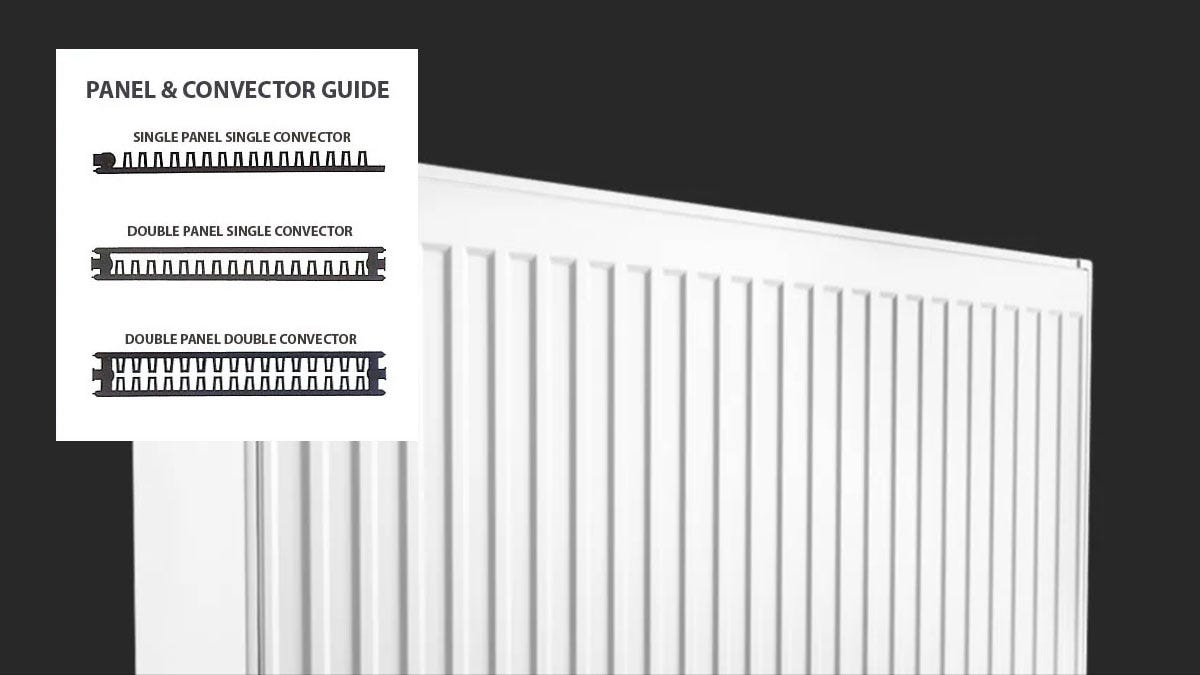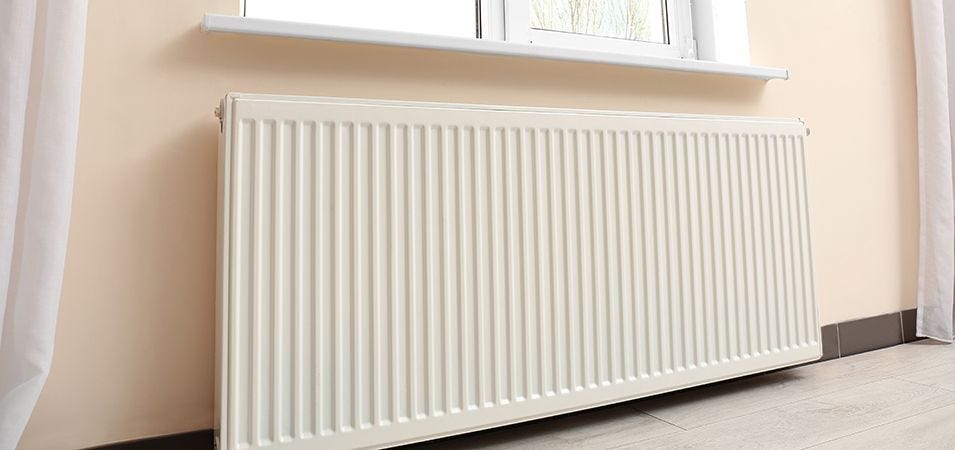What is the difference between single and double panel radiators?


If you are a novice when it comes to radiators, it can be easy to get lost in a minefield of jargon and end up not really understanding the different types of radiator that are available on the market. This article aims to make it a little easier for you.
If we exclude extravagant designer radiators and towel warmers that come in all sorts of varying shapes and sizes, we are left with the standard radiator. The standard radiator is generally the most common type of radiator in the family home and is the typical white grooved panelled piece of metal found under a window that the majority of people would bring to mind if they had to think of ‘a radiator.’
How panel radiators work
When buying a standard radiator, you usually get a choice of ‘single panel’ or ‘double panel’ radiators. If you look at the diagram above, you can clearly see both of these types illustrated. The ‘panel’ is the long wall of metal also known as a ‘tank’. It is these tanks that are filled with water and increase in temperature to emit heat around your room. The longer the panel, the more surface area there is for the radiator to emit heat. Therefore, a radiator with a double panel of the same dimensions as a single panel radiator will give off more heat, as the total surface area is greater.
Note - Heat output is measured in British Thermal Units (BTUs) or Watts, and any reputable radiator retailer will display these figures on their website to enable you to accurately compare heat output of different types of radiators.






What are convector fins?
In less sophisticated times and before the study of the science of heat output had been as fully explored as it is today, you simply had the single panel radiator. It was then discovered that more surface area would increase heat output and so the double panel radiator was born.
Since then however, radiator design has seen the introduction of a new radiator component called ‘convector fins.’ Convector fins are the zig-zagging metal strips that you may have seen at the back of single panel radiators or in the middle of double panel radiators. Again, these are shown the the accompanying image to make it clearer.
The convector fins are very important as they are welded to the main tank (or tanks) and are heated up by the water inside, therefore increasing the surface area of the radiator to emit more heat into the room.
A single panel radiator with convection fins will radiate more heat than a single panel radiator without convection fins and likewise when you add convector fins to double panel radiators.
When buying single and double panel radiators (with or without convector fins), you often also get the option of ‘round top’ (a.k.a. roll top) or ‘compact’ radiators. The main difference is purely aesthetic, with the compact radiators having a grill across the top and panels along the sides to obscure the view of the convector fins. Round top radiators do not have the grills or additional panelling and the final decision is purely down to personal preference.
Why do single panel radiators exist?
To answer the common question of ‘why do single panel radiators exist if double panels emit more heat?’, there are a couple of important reasons why you may wish to purchase a single panel radiator.
The first is the matter of space. If you are installing a radiator into a small hallway, you may find that a double panel radiator sticks out too far from the wall and therefore causes a slight obstruction.
A second possible reason is a matter of aesthetics. For example, if you have a wide window that requires a radiator underneath it, many find a small double panel radiator in the middle looks strange and prefer to have a bigger single panel radiator that matches the length of the window.
In the end the choice is up to you, however we hope that you have now gained a better understanding of the terminology that is used in relation to radiators.
Single and double panel radiators at TradeRadiators.com
At Trade Radiators, we believe our selection of convector radiators is unsurpassed. With many styles and sizes available from several choice manufacturers, we are sure to have one to suit your converter heating needs.
Convector radiators require a low water content to run on a low-temperature heating system using ground source heat pumps. We know that an energy-efficient heater is important to you, which is why we try to be as elaborate as possible about each unit's energy efficiency. We also have low surface temperature radiators for those looking for safe options for public spaces such as schools, hospitals, offices or community centres.



